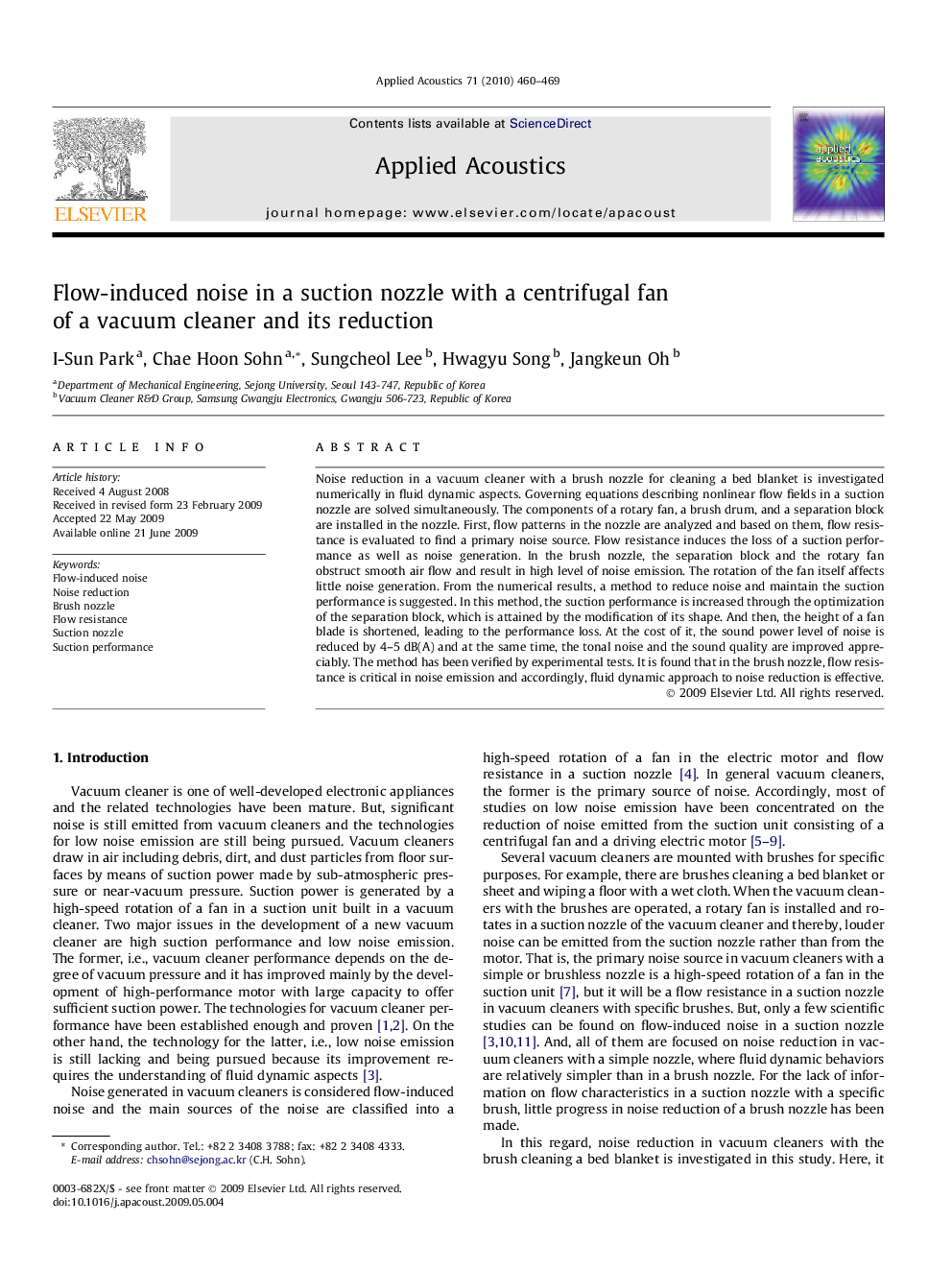| Article ID | Journal | Published Year | Pages | File Type |
|---|---|---|---|---|
| 755020 | Applied Acoustics | 2010 | 10 Pages |
Noise reduction in a vacuum cleaner with a brush nozzle for cleaning a bed blanket is investigated numerically in fluid dynamic aspects. Governing equations describing nonlinear flow fields in a suction nozzle are solved simultaneously. The components of a rotary fan, a brush drum, and a separation block are installed in the nozzle. First, flow patterns in the nozzle are analyzed and based on them, flow resistance is evaluated to find a primary noise source. Flow resistance induces the loss of a suction performance as well as noise generation. In the brush nozzle, the separation block and the rotary fan obstruct smooth air flow and result in high level of noise emission. The rotation of the fan itself affects little noise generation. From the numerical results, a method to reduce noise and maintain the suction performance is suggested. In this method, the suction performance is increased through the optimization of the separation block, which is attained by the modification of its shape. And then, the height of a fan blade is shortened, leading to the performance loss. At the cost of it, the sound power level of noise is reduced by 4–5 dB(A) and at the same time, the tonal noise and the sound quality are improved appreciably. The method has been verified by experimental tests. It is found that in the brush nozzle, flow resistance is critical in noise emission and accordingly, fluid dynamic approach to noise reduction is effective.
